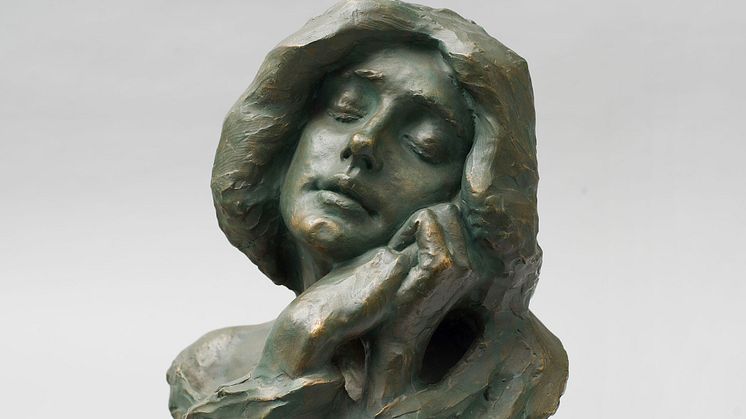
Press release -
Exhibition about women sculptors opens at Nationalmuseum 17 March
The exhibition "What joy to be a sculptor!" presents Swedish women sculptors between 1880 to 1920. As part of a pan-Nordic project between museums and researchers, the exhibition brings some of these sculptors back into the spotlight. Visitors will have the opportunity to recognise and rediscover some hundred sculptures from public and private settings by artists such as Ida Matton, Ruth Milles, Alice Nordin, Agnes de Frumerie and Sigrid Fridman.
“What joy to be a sculptor! Artist. Hooray!” wrote the artist Ida Matton in her diary on 10 August 1923, in spite of the tribulations she sometimes experienced in her chosen profession. That day, work on her sculpture of Gustav Vasa had gone particularly well. The turn of the 20th century saw the emergence of the women’s movement and the fight for equal rights, and women were starting to make their presence felt in various areas of society. Traditionally, the heavy and dirty work of a sculptor was seen as a male occupation. Sculptures of nude bodies were considered unsuitable for ladies. Nevertheless, several women trained as sculptors in Sweden in the late 19th and early 20th centuries.
After their studies they travelled to the Continent, and especially to Paris. There, they encountered modern ways of living and new artistic ideals. There were art schools, salon exhibitions and world’s fairs. The women sculptors were adept at finding new and collaborative approaches, especially when it came to applied art aimed at a wider market. Several of them enjoyed great success at exhibitions and remained in Paris for most of their life. Others led a somewhat nomadic existence across Europe, living independently, and unconventionally by the standards of the time, in free relationships.
Their oeuvre was extensive, encompassing all genres. Often reproduced in various sizes and materials, their sculptures became very popular. But they also came in for criticism and achieved only limited exposure in museums and public spaces. As a result, many of them were forgotten for much of the 20th century.
The exhibition is the result of a multi-year project involving leading Nordic art museums and independent researchers from across northern Europe. The exhibition also has a crowdsourcing component, where the museum invited private individuals to share forgotten stories of female sculptors. Some hundred sculptures will be presented, several of which for the first time in a very long time. To coincide with the exhibition Nationalmuseum is publishing an anthology in English about Nordic women sculptors, in collaboration with researchers and writers from Sweden and abroad.
"What joy to be a sculptor!" Swedish Women Artists 1880–1920 will be presented on the middle floor of Nationalmuseum from 17 March – 11 September 2022. The exhibition’s curator is Linda Hinners, Nationalmuseum.
Artists in the exhibition
Carolina Benedicks-Bruce 1856–1935
Antoinette Råström Vallgren 1858–1911
Sigrid Blomberg 1863–1941
Ida Matton 1863–1940
Ida Thoresen 1863–1937
Agnes de Frumerie 1869–1937
Märta Améen 1871–1940
Alice Nordin 1871–1948
Gerda Sprinchorn 1871–1951
Ruth Milles 1873–1941
Hjördis-Nordin-Tengbom 1877–1969
Sigrid Fridman 1879–1963
Press preview
The exhibition will be shown to the press on Wednesday 16 March at 10 a.m. The exhibition’s curator, Linda Hinners, will start with a presentation in Swedish on the content of the exhibition in Södra ljusgården. Register your interest no later than 11 March to press@nationalmuseum.se. Please note that confirmation of your application is required to attend.
Media enquiries
Hanna Tottmar, Head of Press, press@nationalmuseum.se, +46 (0)8 5195 4400
Categories
Nationalmuseum is Sweden’s museum of art and design. The collections comprise some 700 000 objects, including paintings, sculpture, drawings and graphic art from the 16th century up to the beginning of the 20th century and the collection of applied art and design up to the present day. Nationalmuseum’s responsibility is to preserve and make art accessible and provide knowledge.

